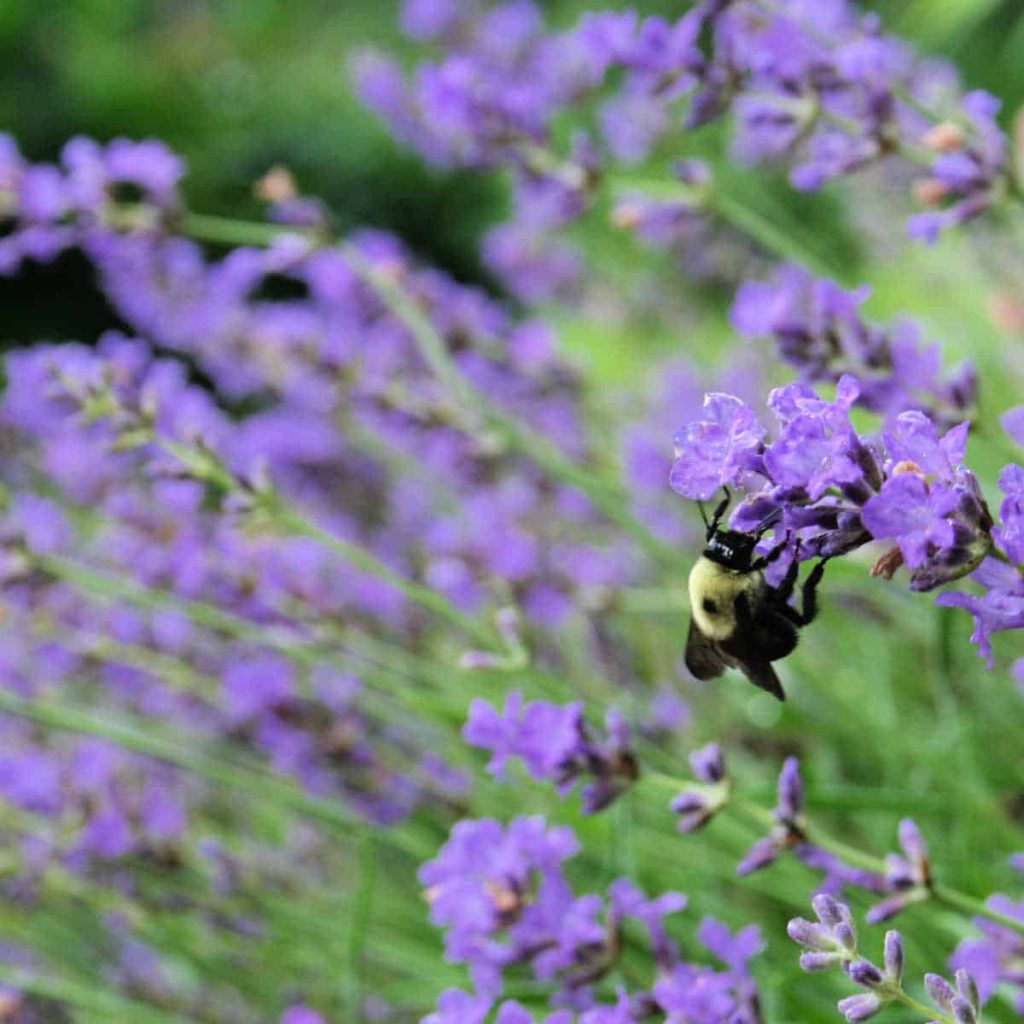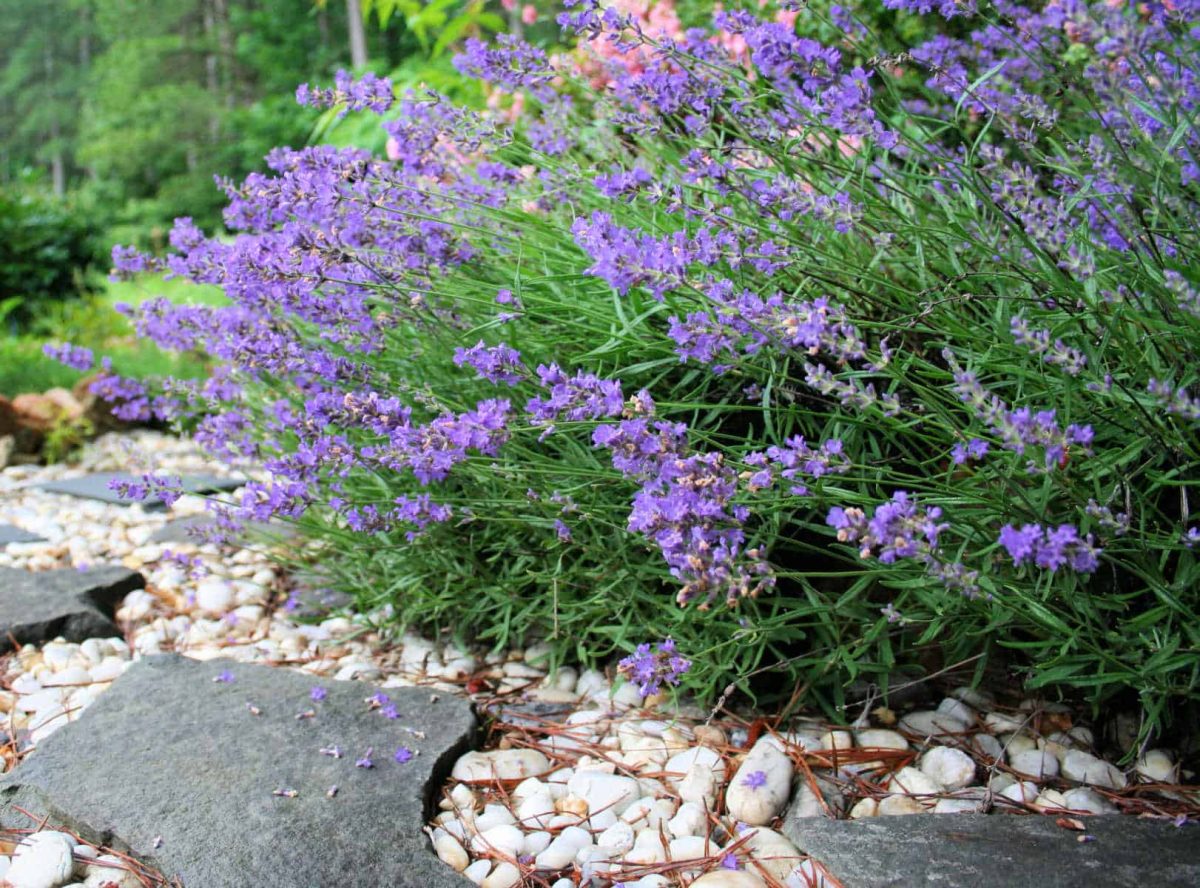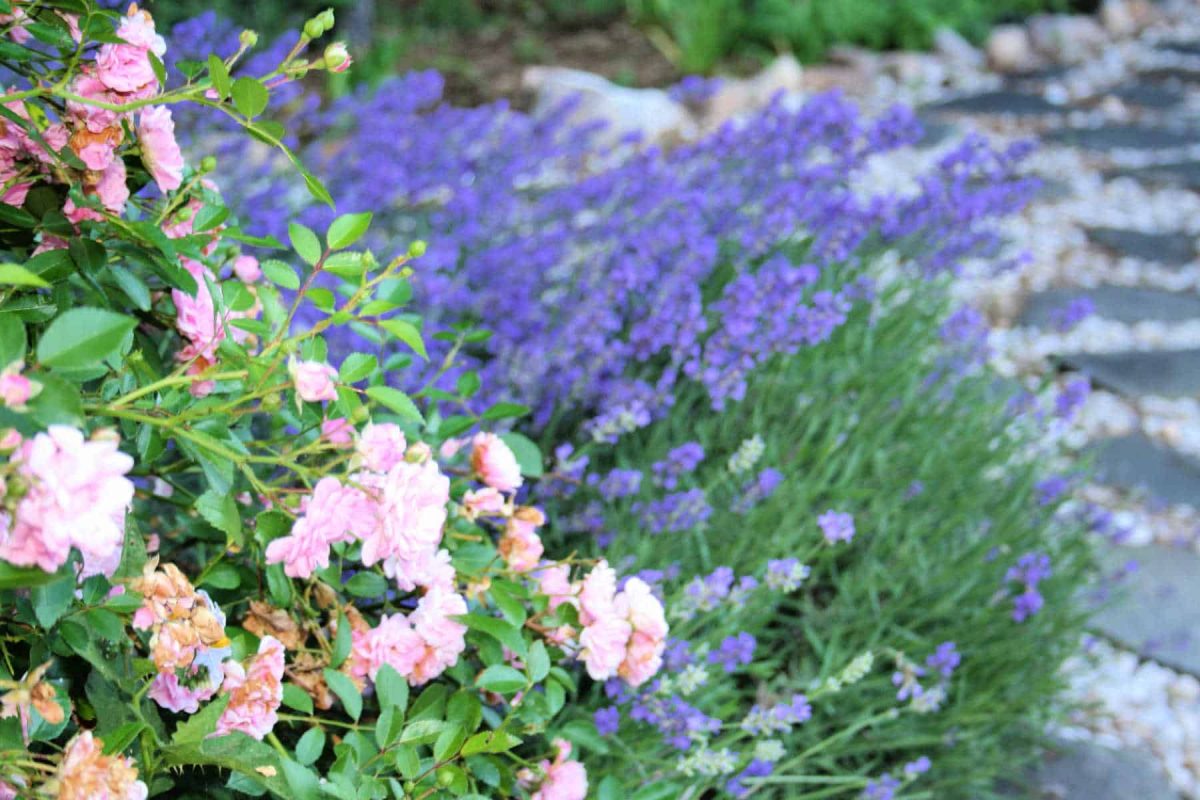Growing lavender takes a bit of time and patience, but it can be grown from seed, from cuttings, or transplants in almost any temperate climate. Here in my zone 6B garden, lavender thrives, and we even have a local lavender farm, Evergreen Lavender Farm, that grows numerous cultivars of the fragrant herb.

Growing Lavender from Seed
The first question many people ask is, “Can lavender be grown from seed?” Absolutely yes! Although it has rightly earned its reputation as a tricky plant to germinate from seed, growing lavender from seed is very possible. In fact, that is how I managed to grow most of my plants.
How to Grow Lavender From Seed
- Start with good quality, fresh seeds. I love Park Seed’s lavender collection and the lavenders available from Strictly Medicinal Seeds.
- Check to see if your seeds have been “cold stratified.” Stratification is the process of breaking through the outer coating of the seed. Some seeds, such as lavender, naturally undergo this process by freezing and thawing, which cracks the outer hull. Some seed companies pre-treat their seeds so you do not need to cold stratify your seeds. If you do need to cold stratify your seeds, mix the seeds with a little bit of potting soil in a bag or plastic container. Put the container with the seeds and soil inside your refrigerator for 30 days. Then, plant them following the directions below.
- Plant seeds indoors 8 to 12 weeks before the last frost date for your region in the spring. If you aren’t sure about the last frost date, check your USDA hardiness zone.
- Fill a clean, sterile seed tray with seed starting mix. Use a potting mix especially for starting seeds. It should be light, airy, and drain easily.
- Sprinkle the lavender seeds on top of the soil compartments in the tray. Try to get only one or two seeds in the middle of each compartment. Gently sprinkle more seed starting soil over the seeds. There is no need to bury them deeply.
- Lightly water the seeds. Slip the clear plastic dome that often comes with seed trays over the top after watering them or slip the container into a plastic bag, leaving the end open for air circulation.
- Place the seed tray in a warm, bright area. Lavender seeds require temperatures around 70 degrees F to germinate.
- Keep the tray moist but not dripping wet. If you must take the cover off or remove the plastic bag to let it air out and dry out a bit, do so.
- Once the seeds germinate or sprout, make sure they get plenty of light and are kept moist.
Transplanting Lavender to the Garden
- Transplant the seedlings into individual pots once they have two or more sets of leaves
- Move them gradually into the garden, giving them a day outside but taking them indoors for up to a week or two to “harden them off” or acclimate them to the outdoors.
- Transplant seedlings into the garden once the danger of frost is over.
Pests that Affect Lavender
Spittle bug leaves a foam on lavender plants that looks like soap. In general, it’s not destructive to the plants.
How to Plant Lavender
Lavender needs soil with good drainage and bright, hot sunshine, so find a spot in your yard that offers these conditions. Because it is a Mediterranean plant, growing lavender requires hot temperatures and good soil drainage. If you need to improve drainage, you can mix a little coarse sand or pebbles into the bottom of the planting hole.
Lavender prefers a pH of 6.5 to 7.5. A soil test, available from your local Cooperative Extension office, will tell you what your current soil pH is and provide guidelines to help you add whatever is needed to raise the soil pH to the desirable level. Usually, this means adding lime, but not always. That’s why it’s important to get a soil test done. Without it, you may add ingredients that your soil and plants do not need.
Planting Lavender
Once you’ve found the right place for your lavender plant, dig a hole twice as big as the pot or container it is growing in. Gently remove the plant by grasping it by the stem, turning the pot over, and tapping the bottom and sides of the pot to loosen it. Place the root-side down in the hole and fill in the hole with soil, trying to plant the lavender at the same depth it was in inside the pot.
Water and Fertilizer
When you first plant lavender in your garden, water it daily until it develops new shoots and roots. Once lavender is established in the garden, it needs water infrequently. Usually, in most climate, rainwater is sufficient. Growing lavender becomes easier as time goes by and the plants become acclimated to your garden.
To fertilize lavender, mix about a tablespoon of bone meal into a quart of compost and spread it around the plants in early spring. You don’t need to fertilize it any more than once a year in early spring.
How to Care for Lavender
Once your lavender plants set down roots, they should grow well and develop new shoots and flowers. In the early spring, prune lavender back by one-third. Feel free to continue to prune any dead or broken branches off of the plant throughout the year.
You can harvest the flowers and stems at any time, but lavender truly begins it spectacular show in its second or third year. By that time, the lavender plant is mature enough to send out flowers, and you should feel free to clip them off and dry them for potpourri or harvest stems to have the sweet scent throughout your home.
Garden Notes: My Lavender Collection
I always wanted to grow lavender, but my gardens on Long Island were too shady and humid to grow it successfully. Now, my zone 6b Virginia garden is perfect for many types of lavender. Currently, my collection includes two types of English lavender and one French variety.

This is one of the lavender borders in my garden.

The lavender grows over the edge and adds a colorful counterpoint to the pink roses.
I’ve grow lavender as a border plant and combined it with pink floribunda roses. I love how the purple flowers blend with the misty pink roses, and the scent rising from that garden on a hot summer day is enough to make a perfumer swoon. I also have them growing in the island bed which sits in the middle of the front yard. Lavender and three different colors of Echinacea form a border around other perennials including peonies, iris, day lilies, yellow and white daisies, crepe myrtle, viburnum and a crab apple tree.
Do you grow lavender? I love it. It’s one of the best and most useful perennials in the garden.




